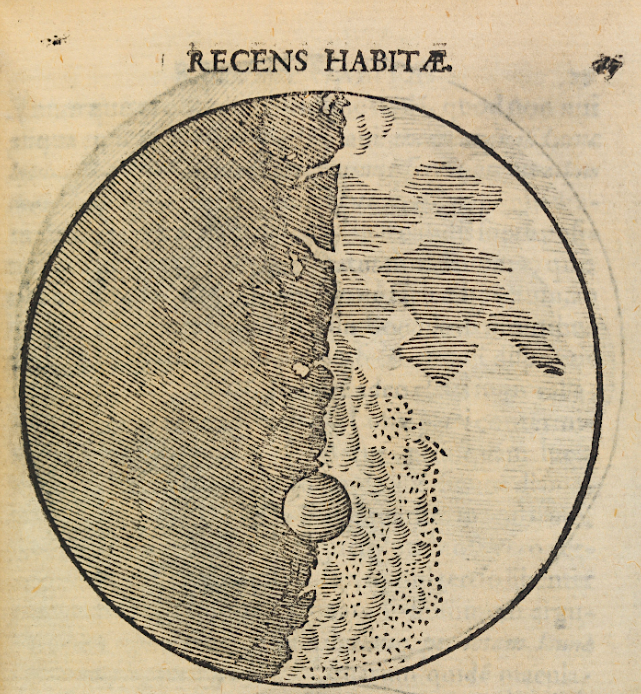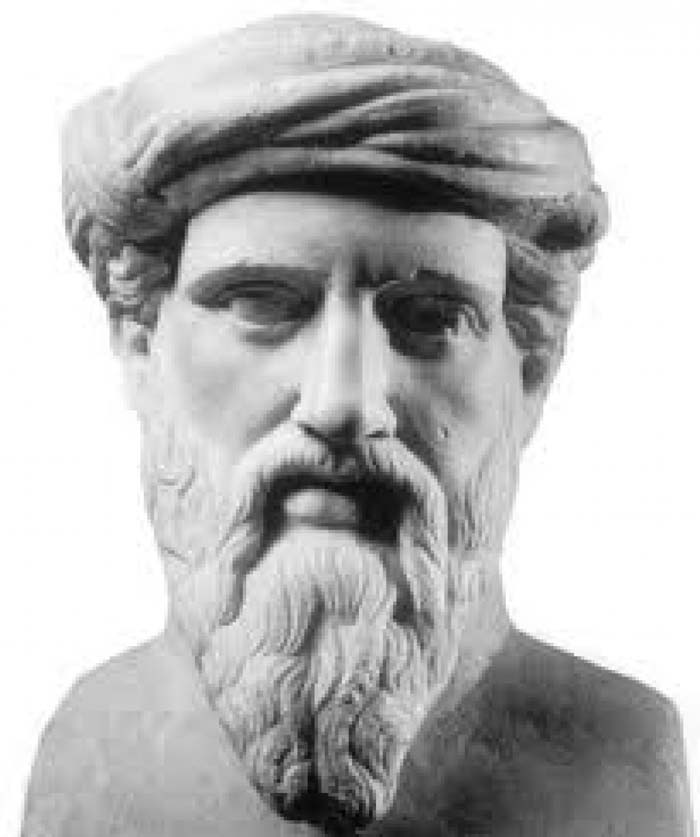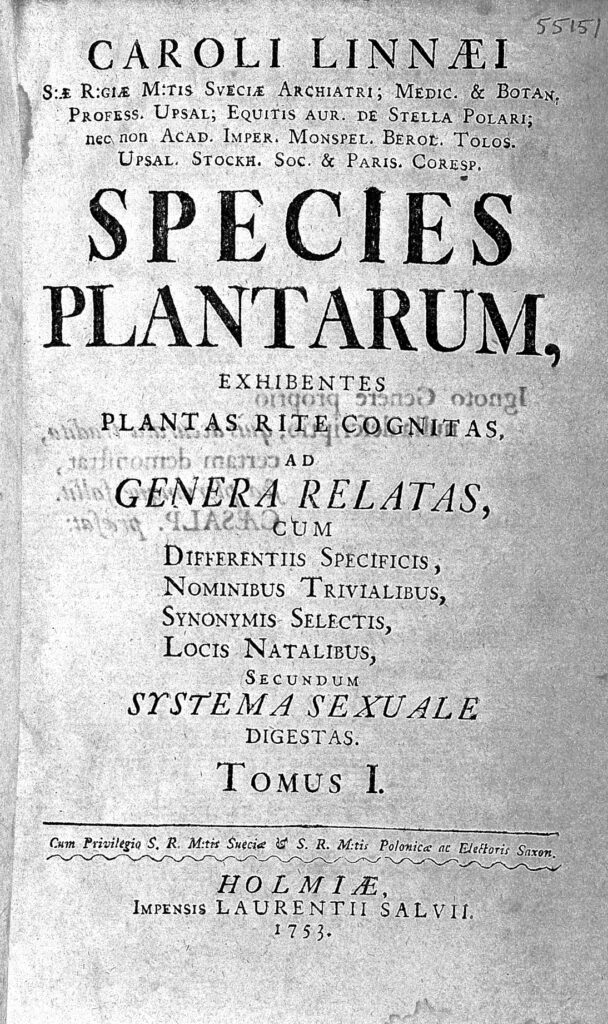
Humanity’s relentless quest for understanding has always been fueled by the extraordinary minds of those who dared to question, observe, and innovate. From the deepest mysteries of the cosmos to the intricate workings of life itself, a select group of visionary scientists has expanded the very boundaries of our knowledge, fundamentally reshaping how we live, work, and perceive the world around us. Their dedication to the pursuit of truth has propelled civilization forward in ways once unimaginable, laying the bedrock for countless advancements that touch every facet of modern existence.
These exceptional individuals, spanning disciplines such as physics, chemistry, biology, and astronomy, have left an indelible mark on the tapestry of human history. Their profound contributions stand as a vivid testament to the transformative power of insatiable curiosity and the enduring legacy of those who challenged the status quo. It is their courage to ask the difficult questions, to meticulously observe, and to propose revolutionary ideas that continues to inspire new generations of thinkers.
Join us now as we embark on an illuminating journey, delving into the lives, groundbreaking discoveries, and lasting legacies of some of history’s most celebrated scientists. We will explore how their audacious insights, often born from humble beginnings or amidst societal upheaval, forever altered the course of scientific thought and continue to resonate in our technologically advanced world. Prepare to be inspired by the sheer intellectual force and unwavering determination that defined these pioneers.

1. Albert Einstein: Architect of Relativity and Universal Understanding
Albert Einstein was not merely a scientific genius but also a captivating public figure whose influence transcended the academic realm. His groundbreaking contributions, most famously E = mc2 and the theory of relativity, transformed conventional notions of space, time, and matter. He compelled humanity to reconsider its place in the universe, providing a new framework for understanding its fundamental forces and profoundly reshaping our world view.
Born in Ulm, Germany, in 1879, Einstein’s journey began modestly as a clerk in the Swiss Patent Office in 1905, a “watershed year.” During this period, he published four revolutionary papers. His work in special relativity introduced the radical concept of space and time as interwoven dimensions, a crucial foundation for modern astronomy. In 1916, he developed general relativity, proposing that mass distorts the fabric of space and time, leading to gravity.
Einstein received the Nobel Prize in Physics in 1921 for the photoelectric effect, though his relativity theories garnered immense public fascination. His legacy remains unparalleled; general relativity predicted black holes and gravitational waves, recently measured by physicists. It also underpins gravitational lensing, enabling astronomers to study distant cosmic objects. “Einstein remains the last, and perhaps only, physicist ever to become a household name,” notes theoretical physicist James Overduin.

2. Marie Curie: The Trailblazer of Radioactivity and Two-Time Nobel Laureate
Marie Curie’s life story is an inspiring saga of unwavering determination and intellectual brilliance that transcended poverty and political upheaval. Her pioneering work in radioactivity, along with her groundbreaking contributions to physics and chemistry, left an indelible mark on scientific understanding, cementing her status as one of history’s most influential scientists.
Born Maria Salomea Sklodowska in Warsaw, Poland, in 1867, Marie faced formidable societal and financial challenges. Denied higher education due to her gender, she sought knowledge through the clandestine Flying University. In Paris in 1891, inspired by Henri Becquerel, she pursued her Ph.D. thesis, leading to her revolutionary discovery of radioactivity, revealing that matter could undergo atomic-level transformations.
Collaborating with her husband, Pierre Curie, they discovered two new elements: polonium and radium. Their tireless work earned them, along with Becquerel, the Nobel Prize in Physics in 1903, making Marie the first woman recipient. Undeterred by Pierre’s death in 1906, she continued research, earning her second Nobel Prize in Chemistry in 1911 for her work on polonium and radium, making her the only person to receive Nobel Prizes in two different scientific fields.

3. **Isaac Newton: The Unifier of Earth and Cosmos through Laws of Motion and Gravitation**Isaac Newton, an English mathematician, physicist, and astronomer, stands as one of the most profoundly influential scientists in history. His groundbreaking contributions across diverse scientific and mathematical disciplines were instrumental in driving the scientific revolution of the 17th century, forever changing humanity’s perception of the physical universe.
Isaac Newton, an English mathematician, physicist, and astronomer, stands as one of the most profoundly influential scientists in history. His groundbreaking contributions across diverse scientific and mathematical disciplines were instrumental in driving the scientific revolution of the 17th century, forever changing humanity’s perception of the physical universe.
Born on Christmas Day in 1642, Newton, as a young man, invented calculus during a period when Cambridge University was closed due to the plague. His introverted nature led him to withhold many findings for decades, but through the persistent efforts of his friend Edmund Halley, he was persuaded to publish. Halley was astounded when Newton revealed he had already solved the problem of planetary orbits.
The culmination of Newton’s intellectual endeavors was “Philosophiæ Naturalis Principia Mathematica,” published in 1687. This monumental work described the motion of planets and projectiles and, more significantly, unveiled the universal force of gravity. He demonstrated this same fundamental force governed both celestial bodies and earthly phenomena, unifying the cosmos and our terrestrial experience under a single, elegant set of laws. Newton’s laws thus became key to unlocking many of the universe’s mysteries.

4. Charles Darwin: Pioneer of Evolution Through Natural Selection
Charles Darwin rose to prominence as one of the world’s most renowned scientists. His transformative journey, sparked by a deep curiosity about beetles and geology, led to his groundbreaking theory of evolution through natural selection. This profoundly challenged prevailing beliefs of his era, leaving an enduring legacy that continues to shape the entire field of biology and our understanding of life on Earth.
Darwin’s path toward becoming the father of evolutionary biology took an unforeseen turn in 1831 when he joined a world-spanning voyage aboard the HMS Beagle. During this five-year journey, he meticulously observed and documented geological formations, diverse habitats, and varied flora and fauna. These detailed observations gradually led him to a paradigm-shifting realization that directly challenged Victorian-era theories of animal origins rooted in creationism.
Darwin’s acute observational skills led him to notice subtle variations within the same species, adaptations influenced by their specific environments, exemplified by Galapagos finches. This served as the genesis for his revolutionary concept of natural selection, positing that species change over time due to environmental pressures, with the best adapted surviving. His “On the Origin of Species,” published in 1859, laid out this simple, yet revolutionary, argument for how Earth’s immense diversity of species came into being.

5. Nikola Tesla: Visionary of Electricity, Magnetism, and Wireless Power
Nikola Tesla exhibited a remarkable aptitude for science and invention from an early age, establishing himself as an eccentric but brilliant pioneer in electrical engineering. His groundbreaking designs played a crucial role in advancing alternating current (AC) technology, enabling the transmission of electric power over vast distances and ultimately lighting up American homes, laying the foundation for our modern electrified world.
Born in 1856 in what is now Croatia, Tesla’s most significant contributions include the development of the Tesla coil, a high-voltage transformer, which profoundly impacted electrical engineering. His innovative techniques also allowed for wireless transmission of power, a concept still being explored today for applications like cell phone charging. Tesla’s visionary mind led him to propose audacious ideas, including a grand plan for towers to transmit signals and electricity wirelessly around the world.
While some of Tesla’s mystique veered into self-promotion and fantastical claims, his genuine contributions to electrical engineering are undeniable. His ceaseless work and inventions made him a household name, a rare feat for scientists of his era. In recent years, Tesla’s legacy has taken on a life of its own, symbolizing innovation and eccentricity, and perhaps most notably, the world’s most famous electric car company bears his name, reflecting his ongoing influence on the electrification of transportation.

6. Galileo Galilei: Architect of Modern Astronomy and Motion
Galileo Galilei, the esteemed Italian mathematician, inaugurated a new epoch in modern astronomy around December 1609. At the age of 45, his inquisitive gaze, channeled through a telescope, turned towards the moon, unveiling a universe far more intricate and dynamic than previously imagined. His observations led to astounding discoveries, revealing the four large moons in orbit around Jupiter and discerning that the Milky Way’s ethereal glow was, in fact, the collective light of innumerable distant stars.
His diligent celestial studies continued, bringing to light sunspots marring the surface of the sun and, crucially, the phases of Venus. This latter observation provided irrefutable evidence that Venus orbited the sun within Earth’s own orbital path, directly challenging the long-held geocentric view. While Galileo did not invent the telescope, nor was he the first to direct one towards the heavens, his meticulous work undoubtedly marked a watershed moment in the annals of science.
Galileo’s groundbreaking findings lent powerful support to the heliocentric model, first proposed by the Polish astronomer Nicolaus Copernicus, which posited a sun-centered solar system. Beyond his revolutionary astronomical insights, Galileo made profound contributions to our understanding of motion. He elegantly demonstrated that objects of differing sizes, when dropped simultaneously, would astonishingly strike the ground at precisely the same moment, illustrating that the force of gravity is independent of an object’s mass. Furthermore, his seminal law of inertia played a critical role in explaining Earth’s continuous rotation.
However, Galileo’s unwavering support for the Copernican model inevitably brought him into direct conflict with the entrenched authority of the Roman Catholic Church. In 1616, the Inquisition commanded him to cease advocating for heliocentrism, as it directly contradicted the church’s geocentric doctrine, which was rooted in the outdated Aristotelian view of the cosmos. The tension escalated in 1633 when Galileo published a work that contrasted the Copernican and Ptolemaic systems, further discrediting the latter, resulting in his placement under house arrest, where he remained until his death in 1642.
Despite the formidable challenges posed by religious authorities, Galileo’s legacy has proven to be as enduring as the stars he observed. His pioneering work on celestial mechanics and the principles of motion laid an indispensable foundation for modern astronomy and physics. His law of inertia, in particular, would profoundly influence future scientific giants, most notably Sir Isaac Newton, who built upon Galileo’s insights to formulate a comprehensive set of laws of motion. These laws continue to guide spacecraft navigation across our solar system today, a testament to Galileo’s timeless contributions, fittingly honored by NASA’s Galileo mission to Jupiter, launched centuries after his passing.

7. Ada Lovelace: The Visionary Who Became the World’s First Computer Programmer
Ada Lovelace, a figure of remarkable intellect and foresight, transcended the societal constraints of her era to fundamentally alter the trajectory of computer science. Celebrated as the world’s first computer programmer, her pioneering work laid the conceptual groundwork for an entirely new field, a century before the advent of modern electronic computers. Her legacy continues to inspire generations of computer scientists, earning her the revered appellation, the “Enchantress of Numbers.”
Born Ada Byron, she was the sole legitimate child of the famed poet Lord Byron, yet her inheritance was a passion for mathematics and logic, carefully nurtured by her mother, Lady Byron. Ada’s profound journey into the world of computation commenced in the early 1830s, when, at the tender age of 17, she embarked on a pivotal intellectual collaboration with the brilliant British mathematician, inventor, and engineer, Charles Babbage. Babbage, a visionary in his own right, had conceptualized an intricate mechanical apparatus he termed the Difference Engine, essentially a monumental mechanical calculator designed to tabulate polynomial functions.
At a societal gathering in the 1830s, Babbage showcased an incomplete prototype of his Difference Engine. Among the discerning attendees was the young Ada Lovelace, who, with an astonishing acuity for her age, immediately grasped the complex internal workings of the machine. This auspicious encounter forged the genesis of a profound working relationship and an enduring close friendship between Lovelace and Babbage, one that would persist until her untimely passing in 1852 at the age of 36. Inspired by Babbage’s relentless innovations, Lovelace recognized an even greater, untapped potential within his subsequent and most ambitious concept: the Analytical Engine.
The Analytical Engine was conceived as far more than a mere calculator; its sophisticated mechanisms, coupled with the revolutionary capacity for users to input commands via punch cards, endowed it with the ability to execute a vast spectrum of mathematical operations. Lovelace, with unparalleled insight, advanced Babbage’s vision by meticulously crafting a sequence of instructions specifically designed to solve a complex mathematical problem. This intricate algorithm, essentially a set of operational steps for the machine, is what many historians have since acknowledged as the world’s first computer program. Through this groundbreaking intellectual feat, Lovelace undeniably established the foundational principles of computer programming, carving out her indelible legacy as one of history’s greatest scientific minds.
Her profound contributions to what she eloquently dubbed “poetical science” are rightfully celebrated as foundational achievements in both computer programming and advanced mathematics. Despite navigating a tumultuous personal life, marked by personal challenges and societal scrutiny, Lovelace’s intellectual brilliance and her almost prophetic foresight into the transformative potential of computing machines distinguished her as a truly singular figure. Charles Babbage himself, a man not easily impressed, famously described Lovelace as an “enchantress” who wielded a remarkable influence over the abstract realm of science, possessing an intellectual force equivalent to the most brilliant male intellects of her contemporary era.

8. Pythagoras: The Architect of Mathematical Harmony and the Enduring Theorem
Pythagoras, an enigmatic and profoundly influential figure, bequeathed an enduring legacy to the world of mathematics that continues to resonate and shape the field even today. While he is most famously associated with the Pythagorean theorem, which elegantly describes the relationship between the sides of a right triangle, his broader contributions extended far beyond this single principle. His fervent belief in the fundamental, almost mystical, role of numbers in the very fabric of the universe fundamentally sculpted the foundations of geometry and mathematical thought for centuries to come.
Born in the sixth century B.C., Pythagoras was a Greek philosopher and mathematician whose life is shrouded in a blend of historical fact and legend. While the precise origins of the Pythagorean theorem, a concept relating the lengths of the sides of a right-angled triangle (a² + b² = c²), are subject to scholarly debate regarding whether he was the first to discover it or merely the first to rigorously prove it, his integral role in its development and popularization is undeniable. His philosophical school, the Pythagoreans, emphasized a world ordered by numbers, where mathematical relationships held the key to cosmic understanding.
Pythagoras’s profound emphasis on the intrinsic importance and beauty of mathematical concepts laid a crucial cornerstone for the development of modern geometry. He and his followers explored concepts such as number theory, the theory of proportions, and the properties of geometric figures, asserting that these numerical and spatial relationships provided an underlying structure to reality. His teachings underscored the power of abstract thought and logical deduction in unraveling the universe’s complexities.
Though Pythagoras did not receive formal awards in the modern sense, his towering legacy in mathematics and geometry is universally regarded as one of the fundamental cornerstones of scientific knowledge. His unwavering commitment to the exploration of mathematical relationships and the pursuit of certainty through rigorous mathematical proofs continues to exert a profound influence on how we approach, understand, and interpret the intricate patterns of the world around us. His name remains synonymous with the pursuit of mathematical truth and the enduring power of abstract reasoning.

9. Carl Linnaeus: The Systematizer Who Gave the World a Common Language for Life
Carl Linnaeus, an intensely practical Swedish botanist, embarked on a singular mission to bring order to what he perceived as the chaotic and unwieldy process of naming living organisms. His ingenious innovation, the system of binomial nomenclature, did more than merely simplify scientific communication; it fundamentally established the bedrock for modern taxonomy, leaving an indelible and universally adopted legacy in the vast field of biology.
Born in southern Sweden in 1707, Linnaeus lived in an era characterized by a significant lack of formal scientific training and, crucially, no standardized system for referring to the countless forms of life. Before his intervention, plants and animals were identified by common names, which varied wildly across different locations and languages, leading to immense confusion. Scientific descriptions, known as “phrase names,” were equally problematic, often taking the form of cumbersome Latin passages that could extend over several paragraphs, making systematic study and discussion incredibly difficult.
While Linnaeus is widely revered as the “father of taxonomy,” his primary focus was, perhaps surprisingly, more on establishing a consistent naming convention rather than meticulously organizing living organisms into elaborate evolutionary hierarchies. The grand task of ordering species based on their evolutionary relationships would fall to later generations of scientists, most notably Charles Darwin in the ensuing century. Nevertheless, his foundational work was critical; it arrived at a time when European explorers were venturing across the globe, continually discovering an ever-increasing multitude of plants and animals previously unknown to science.
As botanist and taxonomist Sandra Knapp observes, there was an escalating need for more and more things to be described, and the existing names were becoming increasingly complex. Linnaeus, with his exceptional talent for noticing and distilling details, first introduced what he termed “trivial names” in the margins of his seminal 1753 book, *Species Plantarum*. His intention was for these simple, two-word Latin constructions for each plant to serve as a convenient shorthand, an effortlessly memorable identifier.
These “trivial names,” which we now recognize as the genus and species, mirrored the natural adjective-noun structure found in languages worldwide. They quickly transcended the margins of his book, moving to the very core of botanical classification and, subsequently, the entirety of biology. Linnaeus, in effect, ignited a revolution – positioning him as one of the greatest scientists – though it was, by his own initial design, an entirely unintentional one. His system provided a clear, concise, and globally understood language for discussing the natural world.

10. Rosalind Franklin: The Unsung Heroine Who Unveiled DNA’s Double Helix
Rosalind Franklin, an incandescently brilliant and unyieldingly tenacious scientist, indelibly transformed the nascent field of molecular biology. Her pioneering application of X-ray crystallography, coupled with her groundbreaking research into the intricate structure of DNA, propelled her to the absolute vanguard of scientific discovery. Yet, tragically, her remarkable contributions were often unjustly overlooked and overshadowed during her lifetime, rendering her legacy not only one of scientific excellence but also a poignant testament to the persistence and resilience of a brilliant mind deserving of far greater recognition.
This British-born firebrand was, by all accounts, a perfectionist with an uncompromising dedication to scientific rigor. While she cultivated a reputation for being somewhat reserved and challenging to engage with on a superficial level, those fortunate enough to know her intimately found her to be outgoing, fiercely loyal, and deeply committed. Franklin’s intellectual brilliance was vividly manifest in all her endeavors, particularly within the specialized domain of X-ray crystallography, an advanced imaging technique capable of revealing precise molecular structures through the diffraction patterns of scattered X-ray beams. Her early, foundational research into the microstructures of carbon and graphite remains profoundly influential within the scientific community to this day.
However, it was Rosalind Franklin’s seminal and meticulously executed work with DNA that would ultimately become her most significant and enduring contribution to science. During her pivotal tenure at King’s College London in the early 1950s, she painstakingly gathered the crucial evidence that brought science tantalizingly close to proving the double-helix theory of DNA. Her zenith of achievement in this regard was famously epitomized in “photograph #51,” an image universally regarded as the finest, most revealing X-ray diffraction pattern of a DNA molecule ever produced at that historical juncture. Regrettably, and controversially, her invaluable work was accessed and viewed by others, most notably James Watson and Francis Crick, without her direct knowledge or explicit consent.
Watson purportedly saw photograph #51 through her colleague Maurice Wilkins, while Crick reportedly gained access to unpublished data from a comprehensive report Franklin had submitted to the council. In 1953, Watson and Crick subsequently published their now-iconic paper in the journal *Nature*, offering a loose citation of Franklin’s work, which, by a twist of fate, also appeared in the very same issue of the prestigious publication. This sequence of events has led to widespread and lasting debate about the ethics of scientific collaboration and recognition.
Rosalind Franklin’s absolutely pivotal role in elucidating the double-helix structure of DNA was, lamentably, conspicuously overlooked when the Nobel Prize in Physiology or Medicine was awarded in 1962 to James Watson, Francis Crick, and Maurice Wilkins. This glaring omission is now almost universally regarded as one of the most significant and regrettable snubs of the 20th century in the realm of science. Despite her unparalleled contributions and the profound impact of her discoveries, Franklin’s life was tragically cut short. In 1956, at the very zenith of her scientific career, she was diagnosed with ovarian cancer, an illness that was quite possibly linked to her extensive and prolonged exposure to X-rays during her rigorous research. Remarkably, demonstrating an extraordinary dedication, she continued her work in the lab with unwavering resolve until her untimely passing in 1958, at the incredibly young age of 37.
Rosalind Franklin’s profound legacy endures not solely for the sheer magnitude of her scientific achievements, but equally for the crucial recognition she was denied during her too-brief lifetime. She was renowned among her peers for her “extreme clarity and perfection in everything she undertook,” as observed by J. D. Bernal in her obituary published in *Nature*, a quality that fundamentally reshaped the field of molecular biology. While her contributions are now widely acknowledged and celebrated, her story also serves as a poignant reminder of how groundbreaking work can be overshadowed and underappreciated, a testament to her lasting influence on the ethical considerations and historical narratives within the world of science.
***
The journey through the lives and groundbreaking discoveries of these scientific titans reveals a tapestry woven with profound curiosity, relentless dedication, and audacious intellect. From Galileo’s cosmic revelations to Franklin’s molecular insights, each individual pushed the boundaries of human understanding, offering new lenses through which to perceive our universe and ourselves. Their legacies are not confined to textbooks or laboratories; they are etched into the very fabric of modern life, inspiring countless innovations and underscoring the timeless power of human inquiry to question, to explore, and to ultimately transform the world.



